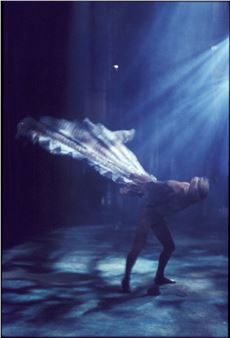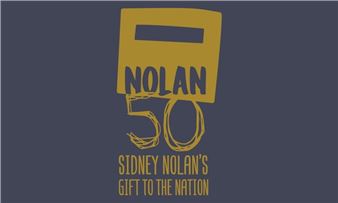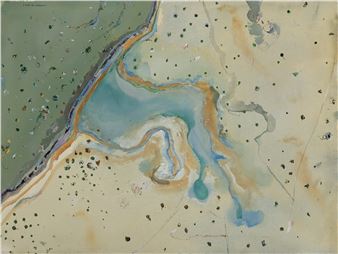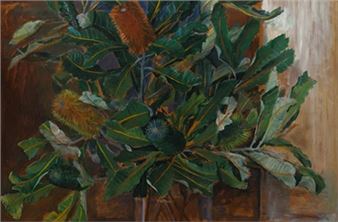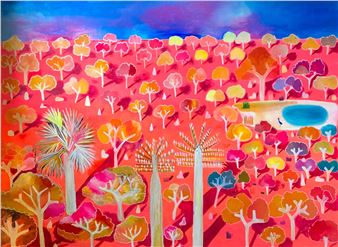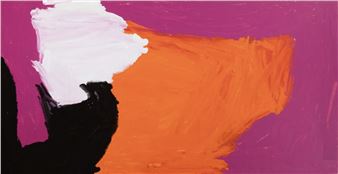Albert Namatjira: Watercolours from the National Gallery of Australia Collection
Albert Elea Namatjira is one of the most significant Western Arrarnta and Australian artists from the mid-20th century who continues to be celebrated for his extraordinary watercolour depictions of his desert Country. Born at the Hermannsburg Lutheran Mission (Ntaria), in the Northern Territory he was named Elea by his parents but later renamed Albert when baptised into Christianity. He married Ilkalita (Kukatja people), also later christened and renamed Rubina, and had eight surviving children, Enos, Oscar, Ewald, Keith, Maurice, Maisie, Hazel and Martha, many of whom, with their descendants, have become recognised watercolourists.
In 1934 Namatjira met interstate painters Rex Battarbee and John Gardner, who visited regularly to capture images of Central Australia. Their paintings would be displayed throughout the Mission buildings, where Albert would see this new western art for the first time.
Later acting as a guide and cameleer on a two-month painting expedition in 1936, Namatjira learned watercolour painting from Battarbee, enabling his expression in an unfamiliar medium that perfectly suited his innate artistic ability. Although a strong cultural man, he was depicting the same cultural areas and sites as his fellow contemporaries, but, instead of layered abstraction and iconography, he painted literal depictions of landscape.
Namatjira’s first solo exhibition in 1938 sold out, ensuring his mainstream popularity throughout his career and beyond his untimely death in 1959.
This exhibition showcases Namatjira’s masterful representations of the desert landscape’s beauty, from his earliest works of the 1940s through to the 1950s. They include his depictions of iconic white ghost gum trees, which he believed embodied the Ancestors, and Finke River sites traversing the MacDonnell Ranges and Glen Helen Gorge. Namatjira would sometimes capture this river whether flowing after the rains or as a dry riverbed alongside his tall white ghost gums. Sites around Mt Sonder, Mt Giles and Standley Chasm were exquisitely captured in pastel blues, purples, and vibrant oranges, rendering Namatjira’s deep knowledge of his hereditary Country.
This important collection of Namatjira’s watercolours from the National Gallery of Australia collection was primarily gifted by Gordon Darling AC CMG and Marilyn Darling, who have significantly contributed to the Gallery’s Hermannsburg watercolour collection.
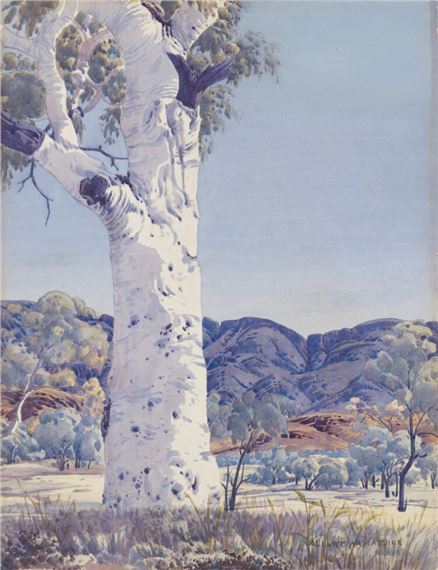
Recommended for you
Albert Elea Namatjira is one of the most significant Western Arrarnta and Australian artists from the mid-20th century who continues to be celebrated for his extraordinary watercolour depictions of his desert Country. Born at the Hermannsburg Lutheran Mission (Ntaria), in the Northern Territory he was named Elea by his parents but later renamed Albert when baptised into Christianity. He married Ilkalita (Kukatja people), also later christened and renamed Rubina, and had eight surviving children, Enos, Oscar, Ewald, Keith, Maurice, Maisie, Hazel and Martha, many of whom, with their descendants, have become recognised watercolourists.
In 1934 Namatjira met interstate painters Rex Battarbee and John Gardner, who visited regularly to capture images of Central Australia. Their paintings would be displayed throughout the Mission buildings, where Albert would see this new western art for the first time.
Later acting as a guide and cameleer on a two-month painting expedition in 1936, Namatjira learned watercolour painting from Battarbee, enabling his expression in an unfamiliar medium that perfectly suited his innate artistic ability. Although a strong cultural man, he was depicting the same cultural areas and sites as his fellow contemporaries, but, instead of layered abstraction and iconography, he painted literal depictions of landscape.
Namatjira’s first solo exhibition in 1938 sold out, ensuring his mainstream popularity throughout his career and beyond his untimely death in 1959.
This exhibition showcases Namatjira’s masterful representations of the desert landscape’s beauty, from his earliest works of the 1940s through to the 1950s. They include his depictions of iconic white ghost gum trees, which he believed embodied the Ancestors, and Finke River sites traversing the MacDonnell Ranges and Glen Helen Gorge. Namatjira would sometimes capture this river whether flowing after the rains or as a dry riverbed alongside his tall white ghost gums. Sites around Mt Sonder, Mt Giles and Standley Chasm were exquisitely captured in pastel blues, purples, and vibrant oranges, rendering Namatjira’s deep knowledge of his hereditary Country.
This important collection of Namatjira’s watercolours from the National Gallery of Australia collection was primarily gifted by Gordon Darling AC CMG and Marilyn Darling, who have significantly contributed to the Gallery’s Hermannsburg watercolour collection.
Artists on show
Contact details


 ARTISTS
ARTISTS







